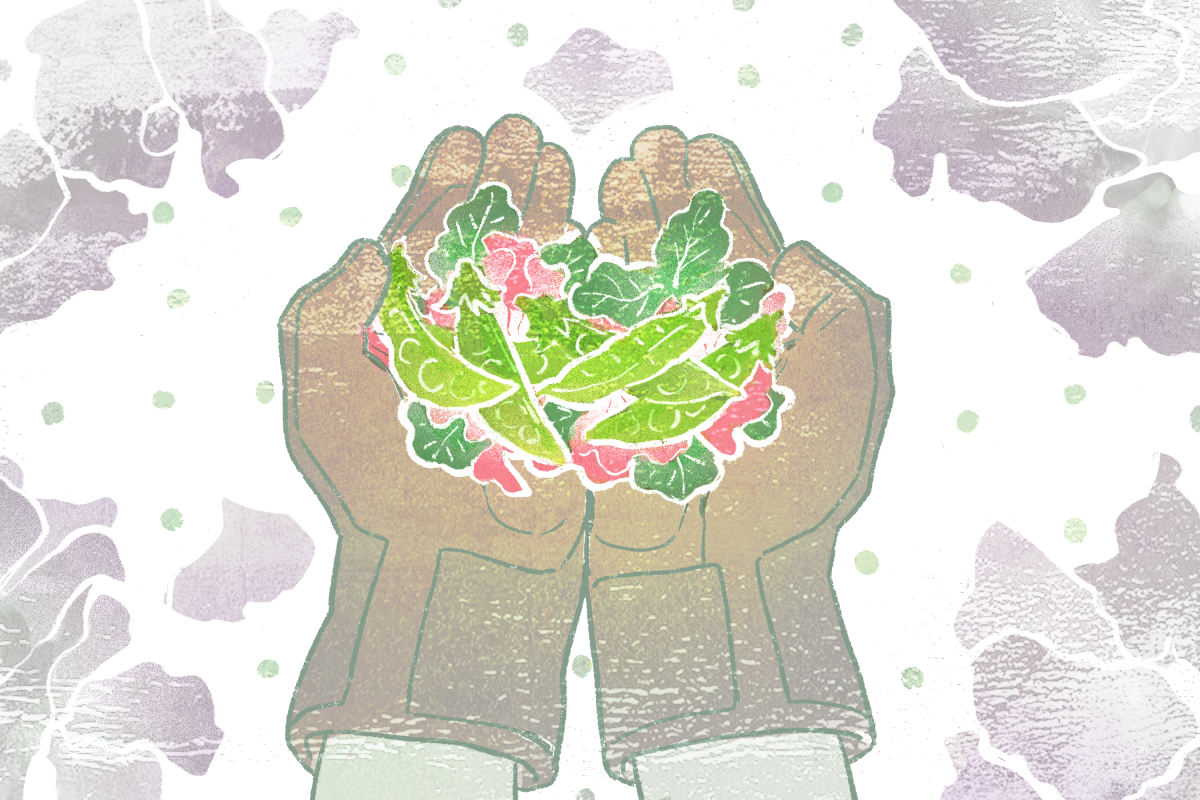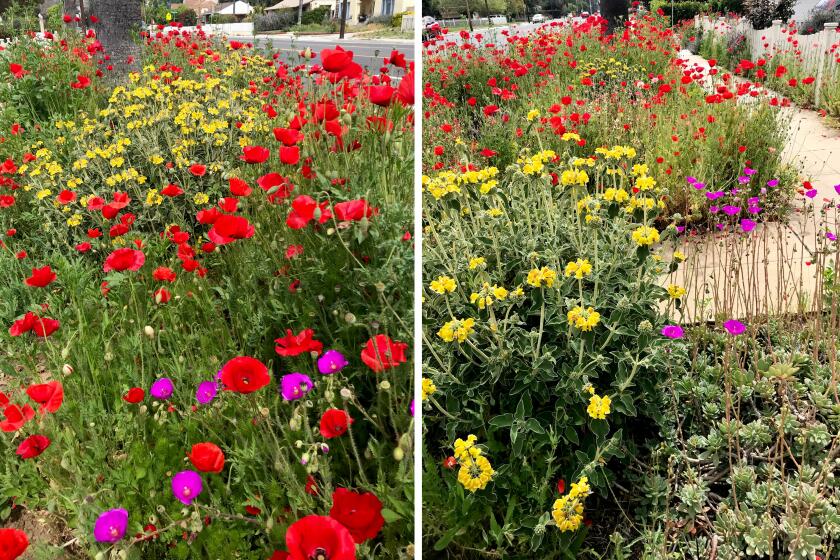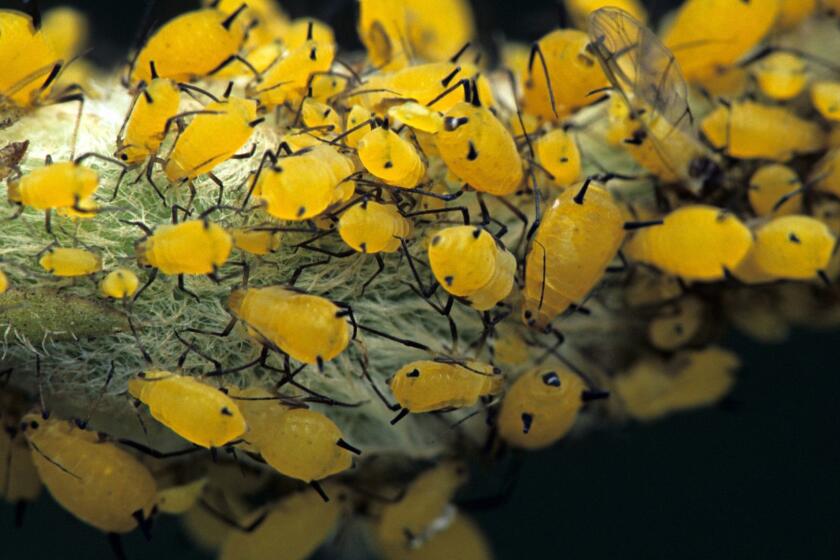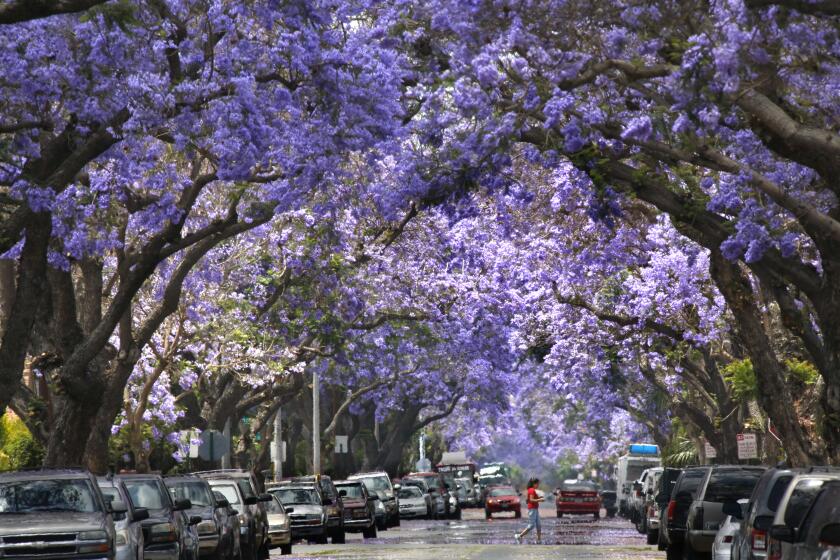Opinion: How to dig your way out of climate grief

- Share via
This winter there were moments when I wasn’t sure I was going to make it back into my garden. I wasn’t sure I wanted to, would have time, would care. I wasn’t sure it would ever stop raining.
After six of the warmest years ever recorded in California, after five years of record wildfires, amid the driest period in 1,200 years, this year’s record snowfall, its deluge after deluge of violent rain seemed more than the earth could take.
More water is a net good after long drought, but it’s also an uneasy bounty. During the storms, our roads washed out, our fields reverted to ancient lakes. Now, more infrastructure will be challenged by the enormous snowmelt that is coming. Hillsides blooming from heavy rains will produce more tinder for the next wildfire. The past winter’s storms felt ominous. Now El Niño could bring another catastrophically wet winter, and climate change could spark a cycle of superstorms.
A California garden grows in a parking strip, where poppies nod into the bike lane, brushed back by roaring Harleys and pickups.
The sun is out now and the weather is mild. It may seem that the hard winter should have nothing to do with the work I do in my yard and a nearby community garden. Yet I still hold the downed trees, the homes swept away, the overtopped rivers in my head and in my body.
There’s a phrase friends of mine have started tossing around: “climate grief,” our sharp sadness that the planet we knew is in terrible flux, that we’re losing pieces of it, in real time, in front of our eyes. Climbing over fallen redwoods strewing the road after one of the toughest storms in March, I realized that my climate grief presents as numbness, disgust, fury and despair. It makes me feel as if whatever we do now — whether cleaning our yards, building more resilient wetlands, voting in decent climate policies — will be too little, too late. I’m sure I’m not alone in this.
And yet, sweeping back the layers of wet muck and adding some dry straw to the compost, turning over soil, putting in seedlings, watching for weeds, I’ve discovered that my anger and my numbness and my grief are actually places I need to get to, to excavate, to dig out, to feel. I need to get into a garden, to work through the grief, to engage it.
When I garden, I lose, for a few hours at least, the sense that only a catastrophe of losses is upon us. I lose for a while the nagging feeling that there’s no hope, that we don’t care at all, that we’re irrevocably broken. Instead, I’m setting intentions for dark, microbe-rich soil. I’m discovering things that can survive — some mint, some carrots, a bumper crop of potatoes — and things that volunteer: a cucumber plant, at the edge of the compost.
Each morning I putter in my vegetable garden, barefoot, in my nightgown.
The garden cures me of my numbness in other ways too. Because our garden is in our front yard, I’m out sharing plants with my neighbors. I don’t have enough sun for everything I want to grow, so Ari keeps my potted blueberry bushes in her yard, and we share the fruit. Stephen, who was born outside Kharkiv, has an annual tradition of bringing by special Ukrainian tomato starts, a variety that flourishes here despite the Bay Area’s summer fog.
I trade seeds and starts for straw from my chicken coop, which other gardeners like for its nutrients. Dalya, who lives two doors down, wanders by to share insights about cultivating shitakes on loam in a shady side yard. She expounds on the amazing fact of mycelial networks, the great web they build in the soil.
Above ground, suddenly, I feel less angry or afraid or despairing or alone.
In a record year after record years, I stop and look at a pea blossom, faint green veins weaving its pale green face. I weed daikon with my daughter and cut fava leaves to make into a pesto with my son. We make a salad out of turnip sprouts. We water our plants with a bucket that captures the now-guiltless flow from our backyard sink.
The jacaranda trees look sparse in parts of Los Angeles County. While some trees have whiffs of flowers, gloomy weather has slowed down the purple party.
We can’t save what we don’t love. When I’m in the garden, I realize that my grief is actually another name for this love, is a call to get out and tend this planet we often feel like we’re losing before our very eyes. When I do, I remember that my actions matter and that life is stronger and more surprising than I knew, and both of these things help ground me for the road ahead.
“Whether in a plot in a yard or pots in a window, every politically engaged person should have a garden,” says my friend Camille Dungy, who just published a book of essays called “Soil: The Story of a Black Mother’s Garden.” She says the act of tending plants might help us find some of the grace we need to care for one another and the planet writ large. “It’s part of our job not to miss the enormous beauty that’s still left,” says my friend, the poet Jane Hirshfield. We still have to celebrate “all that’s left to save,” as marine biologist Ayana Elizabeth Johnson puts it.
The garden reminds us that despite what has been destroyed, what is at risk, we can build, amend, repair. In doing so, we find delight in what’s still here, in what we can still share, together, now.
Tess Taylor is an award-winning poet. A new anthology she edited, “Leaning Toward Light: Poems for Gardens & the Hands That Tend Them,” will be published in August. She lives and gardens in El Cerrito.
More to Read
A cure for the common opinion
Get thought-provoking perspectives with our weekly newsletter.
You may occasionally receive promotional content from the Los Angeles Times.













